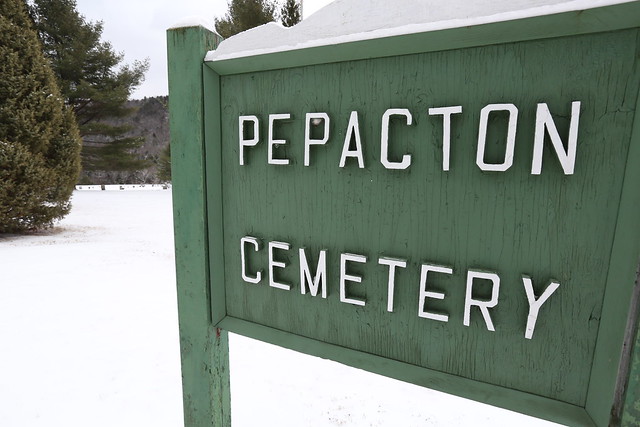FOR IMMEDIATE RELEASE 16-10 February 25, 2016 Contact: deppressoffice@dep.nyc.gov, (845) 334-7868 Department of Environmental Protection Announces Rehabilitation Project for Pepacton CemeteryMore Than 300 Gravestones Will be Cleaned, Repaired or ReplacedThe New York City Department of Environmental Protection (DEP) today announced plans to clean and repair more than 300 headstones this spring at Pepacton Cemetery, the location of approximately 1,000 deceased who were reinterred beginning in the 1950s to allow for the construction of Pepacton and Cannonsville reservoirs. The work to reset and clean the headstones will be performed by a company from Delhi, N.Y., that specializes in gravestone rehabilitation. Relatives of the deceased may reach out to DEP to learn more about the restoration work, including whether a memorial stone for one of their ancestors will be among those restored. “Out of respect for those who were reinterred by the City many decades ago, DEP will work with professionals to rehabilitate several hundred headstones at Pepacton Cemetery,” DEP Commissioner Emily Lloyd said. “We are happy to be working with a local company on this project to ensure that the memorials are kept in a state of good repair.” The project, which will cost roughly $150,000, is expected to begin this spring. Roughly 300 gravestones will be cleaned, and another 27 that are beyond repair will be replaced altogether. DEP will also rehabilitate some markers and monuments that are in disrepair, as well as reset others that have fallen or are about to. The project includes the following: resetting 53 gravestones and two medium-size obelisk monuments, repairing cracks on 19 gravestones, leveling three large granite or marble obelisk memorials, and repairing two large sandstone gravestones. The project will be overseen by Gravestone Cleaning Service, whose owners have long been involved in statewide cemetery associations and in local historic preservation efforts in Delaware County. Work is expected to begin this spring and be completed by the end of the year. DEP is inviting descendants of those buried in the cemetery to reach out if they have any questions or concerns about the restoration project. Inquiries can be directed to DEP’s Downsville Regional Manager, Chris Gozza, at (607) 363-7003. Approximately 1,000 deceased are buried in Pepacton Cemetery. New York City established the cemetery in the 1950s for the purpose of reinterring the deceased who were moved from cemeteries to allow for the construction of Pepacton and Cannonsville reservoirs. A total of 21 cemeteries were affected by the construction of the two reservoirs, and 4,521 deceased were reinterred. At the time, families were notified and given the opportunity to reinter deceased relatives in a location of their choosing. The remains of those whose families did not come forward were reinterred in Pepacton Cemetery. According to historic records, it was anticipated that New York City would transfer ownership of the cemetery to either a cemetery operator or the Town of Andes, where it is located. However, the transfer did not happen and New York City has been maintaining the cemetery ever since. DEP manages New York City’s water supply, providing more than one billion gallons of high quality water each day to more than 9 million New Yorkers. This includes more than 70 upstate communities and institutions in Ulster, Orange, Putnam and Westchester counties who consume an average of 110 million total gallons of drinking water daily from New York City’s water supply system. This water comes from the Catskill, Delaware, and Croton watersheds that extend more than 125 miles from the City, and the system comprises 19 reservoirs, three controlled lakes, and numerous tunnels and aqueducts. DEP has nearly 6,000 employees, including almost 1,000 scientists, engineers, surveyors, watershed maintainers and other professionals in the upstate watershed. In addition to its $70 million payroll and $157 million in annual taxes paid in upstate counties, DEP has invested more than $1.7 billion in watershed protection programs—including partnership organizations such as the Catskill Watershed Corporation and the Watershed Agricultural Council—that support sustainable farming practices, environmentally sensitive economic development, and local economic opportunity. In addition, DEP has a robust capital program with nearly $14 billion in investments planned over the next 10 years that will create up to 3,000 construction-related jobs per year. For more information, visit nyc.gov/dep, like us on Facebook, or follow us on Twitter. | ||
